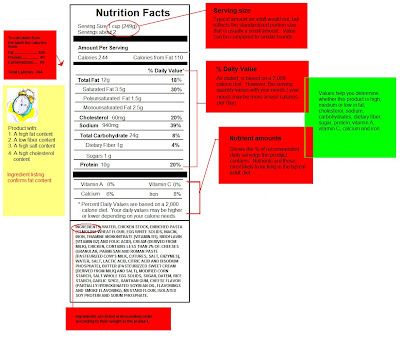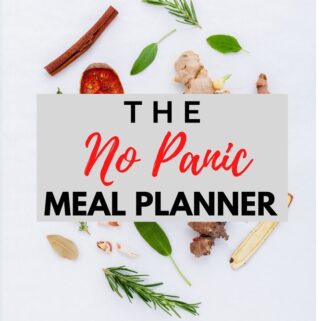Nutrition labels are on mostly every food product. Today, it is important that all consumers are able to read these labels and understand them. Labels can be use to planning meals, especially for those on special diets.
What is a nutrition label?
A nutrition label is a summarized nutrition guide that lists the food content and ingredients of a package and evaluate it worth according to a balanced diet recognized by the Food and Drug Administration.
Why do you need nutrition labels?
Nutrition labels serves to provide information to the buying consumer so they can be clear as to what is contained in the food packaged. The label also protects the producers from frivolous health claims.
Should all foods be labeled?
Nutrition labeling regulations requires that foods be labeled with nutrition information if it has multiple ingredients. The law require the labeling fro more than 90% of all processed and packaged foods. However, foods with packaging that are too small do not require a label, but must carry a telephone number or address. Generally, fresh vegetables, fruits, and raw meats does not require labeling because the food is sold individually or without packaging. Labeling is not required for bakeries and restaurants, but some establishments may have them available if a nutrition claim is made. However, if a nutritional claim, such as low calories, is made by the manufacturer, it should be added to the Nutrition Facts panel
What information do you get on a nutrition label?
The information is placed what is referred to as the Nutrition Facts panel and it generally highlights the following contents for the food: fat, saturated fat, trans fat, cholesterol, dietary fiber, two vitamins (A and C), two minerals (calcium and iron), standard serving size, servings per container, and calories. Additional information may be added to the panel.
What's the most important thing to remember when reading Nutrition Labels?
1 gram of fat = 9 calories
1 gram of protein = 4 calories
1 gram carbohydrate = 4 calories
1 gram of alcohol = 7 calories
How would I know if a claim on a food package label is not misleading?
Generally claims are classified as: health, nutrient content, and structure/function claims. The validity of these claims rests on the manufacturer, FDA (within the country), or the local Trade commission.
A statement is considered a health claim if it includes a substance (food, or component of food, or dietary ingredient) and a disease or health-related condition. If a health claim is backed up by scientific proof and approval given by the FDA such claims could be considered qualified and assured accurate and not misleading to consumer.
Claims that are dietary guidance and structure/function claims are not subject to a FDA review and authorization, but they must be truthful and non-misleading. These claim may use terms such as free, high, and low, more, reduced, lite (with the intention to accurately quantify the contents), but must conform to the criteria of an appropriate nutrient content claim or carry a disclosure statement that does not comply with the claim. As for claims such as "Calcium builds strong bones" or "Fiber maintains bowel regularity", which indicates the benefit of a product, must also backed up with another statement "not intended to diagnose, treat, cure, or prevent any disease". Only a drug can legally make such a claim.
An Example of a Nutrition Label
Here is a reader friendly example of a nutrition label to help you further understand how to read labels. Click on the picture to enlarge it.

You might also like:
Busting 10 myths on healthy eating
Eight facts about dietary fiber
Facts about cooking oil
Fighting stress by eating healthy
Health claims
Healthy eating: taking control of what you eat
Healthy food choices
Introducing healthy eating
Potatoes: a healthy choice
The health dangers of trans fat
Tips for healthy eating
Top 10 foods for cardiovascular fitness
10 cheapest, healthiest foods
Download our free toolbar
Join our Facebook fanpage
Subscribe to our Newsletter






Leave a Reply